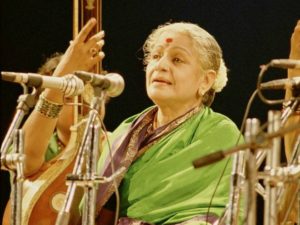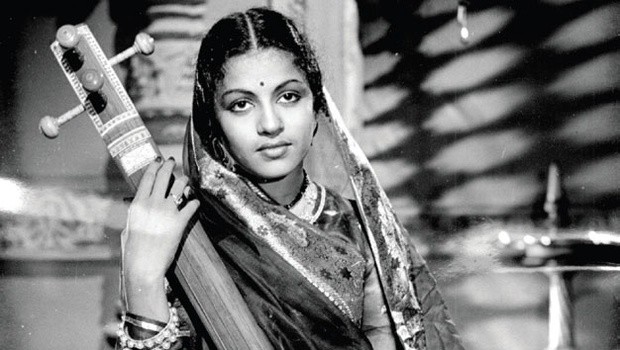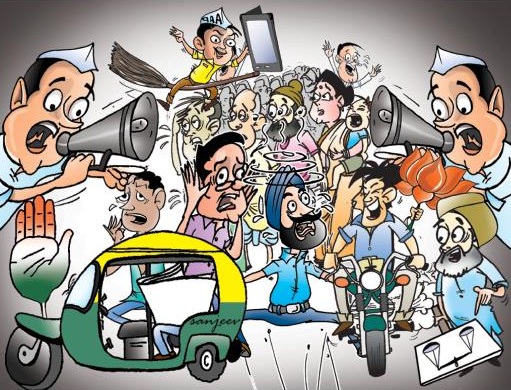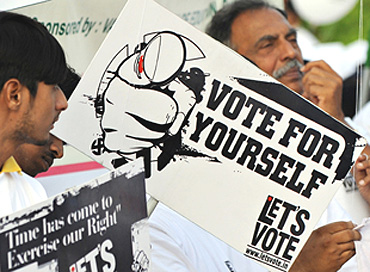Raaga Based Song of the Day: Kuchh to log kahenge….
Raag Khammaj, Tal Kaherava
Remembering Rajesh Khanna on His Birth Anniversary, 29th Dec
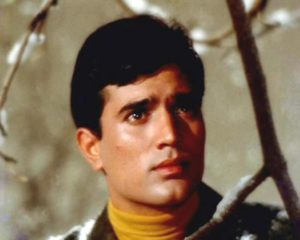
Rajesh Khanna was born as Jatin Khanna in Amritsar on 29 Dec 1942. He died on 18 Jul 2012 in Mumbai. Millions of his fans were saddened by his death.
He was born to Lala Hiranand and Chandrani Khanna but was adopted and raised by Chunnilal Khanna and Leelawati Khanna, relatives of his biological parents. His interest in theatre during his school and college days (in Mumbai) led to his joining Hindi films. Nowadays talent contests are in hundreds. However, during his days, in 1965, Rajesh Khanna was one of eight finalists from more than 10,000 contestants in the 1965 All India Talent Contest, organised by United Producers (BR Chopra, Bimal Roy, GP Sippy, HS Rawail, Nasir Husain, J. Om Prakash, Mohan Saigal, Shakti Samanta and Subodh Mukherji and others had created this organisation and were judges of the contest) and Filmfare.
As a result of winning the talent contest, he won acting in Chetan Anand’s 1966 movie Aakhri Khat and Ravindra Dave’s Raaz. Aakhri Khat was India’s entry for the Best Foreign Language Film at the 40th Oscar Academy Awards in 1967.
He soon emerged as a super-star and has record number of movies to his credit that consecutively became super-hits. Indeed, at one time in the seventies, anything that he touched became gold. Heroines lined up to act with him and he made all of them swoon with his irresistible charm. As an example, I do remember this anecdote when I went to see his 1970 movie Aan Milo Sajna with Asha Parekh. This was in Chandigarh where I was studying. When it came to the song: Achha to ham chalte hain, the moment he sang on the screen: “Phir kab miloge?”, hundreds of girls in the hall, in unison responded: “Jab tum kahoge”. Some of this magic has been recorded by his co-star of several movies: Sharmila Tagore.
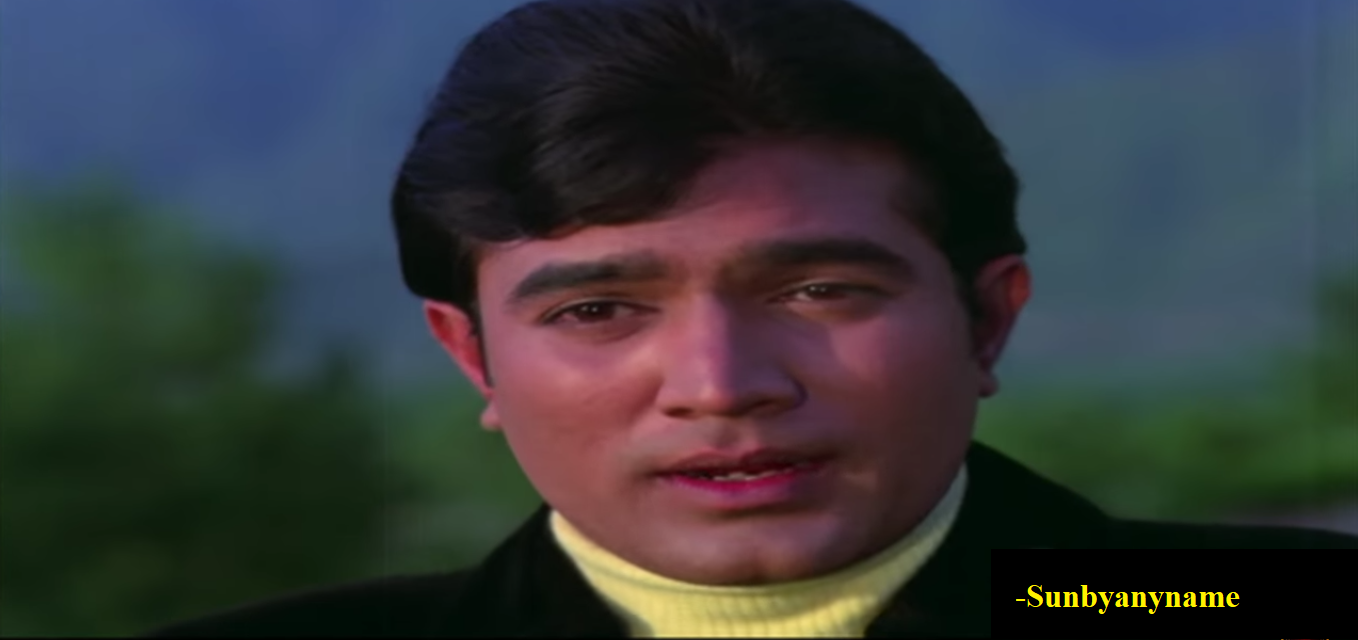
With his pimpled face and a little obese frame, he still gave the impression of being the most romantic hero that Hindi films ever saw. That was because of the strength of his adorable acting. Many people actually cried when he passed away on screen in Anand and Andaz. He did it so well. All of us loved Kaka (Rajesh Khanna’s nickname) and we couldn’t ever get enough of him.
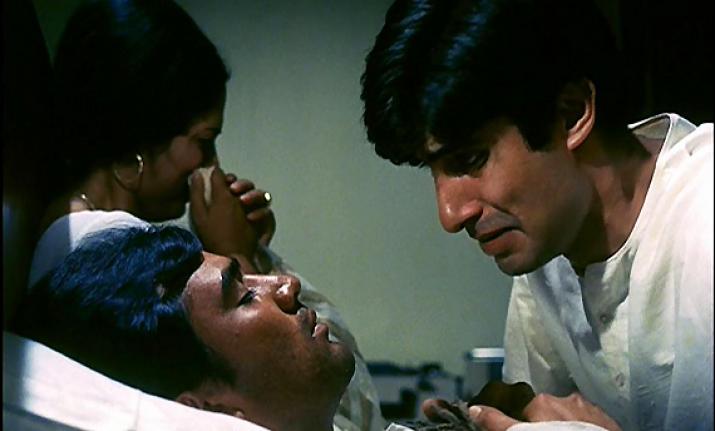
To see the comparison between him and the other super-star Amitabh Bachchan, you must see the song: Kahin door jab din dhal jaaye; AB stands there like a school kid in front of a maestro.
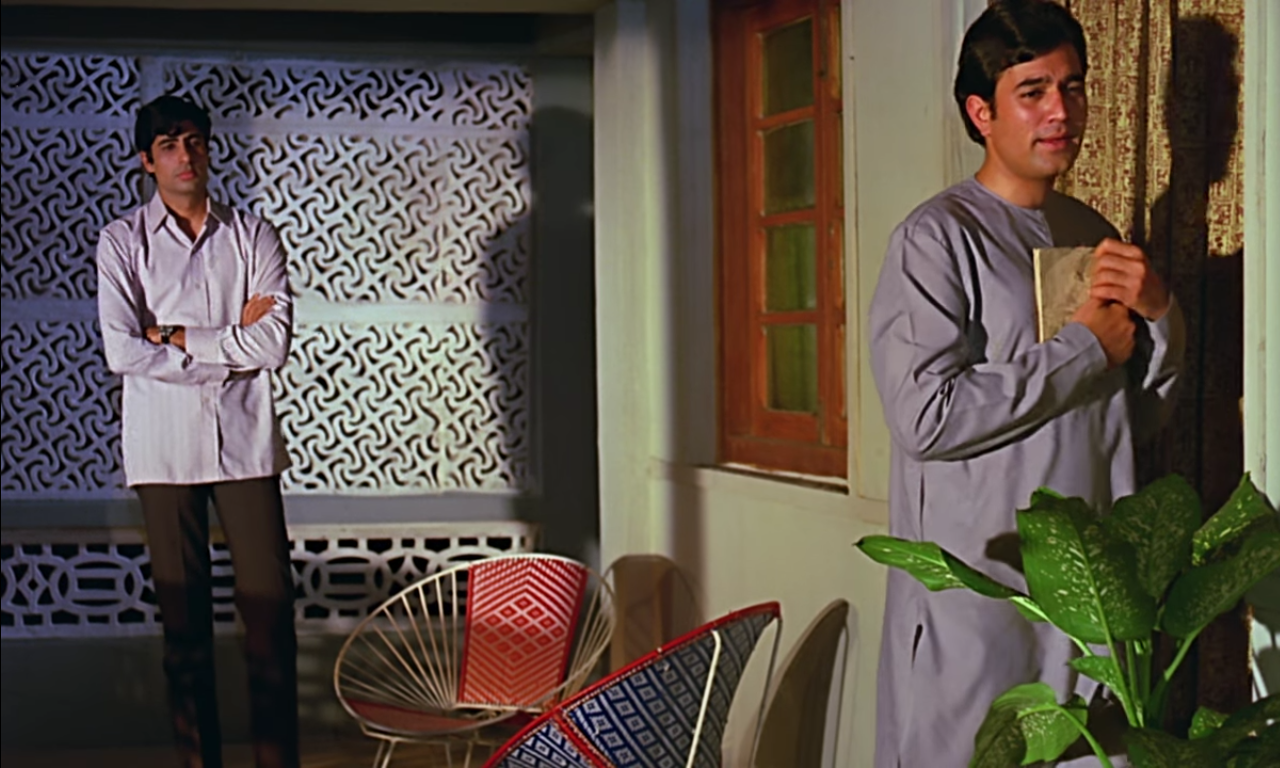
To remember him by I shall give you a song lip-synced by him in the 1972 Shakti Samanta movie Amar Prem: Kuchh to log kahenge.
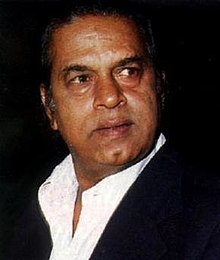
Shakti Samanta is in news these days, more than eight years after his death, for reasons other than what he used to be in news for; which was that he too was considered an alchemist: anything that he touched turned to gold. He made a super-hit movie literally every alternate year. Howrah Bridge, China Town, Kashmir Ki Kali, An Evening in Paris, Aradhana, Kati Patang, Amar Prem, Amanush, Pagla Kahin Ka, Ajanabee, Mehbooba, Anurodh and Aavishkar are some of the movie that he made.
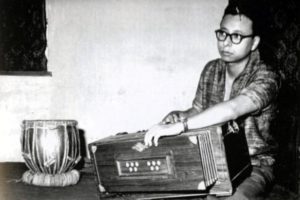 If SD Burman did wonders for Shakti Samanta’s Aradhana, Sachin’s son Rahul Dev Burman did wonders for Amar Prem songs. Rahul Dev was well versed in both majot genre’s of music: the Western Beat or Pop and the Raaga Based. Here he preferred to compose it in Khammaj, the raaga Bengali composers were and are so much at home, with from Pandit Ravi Shankar himself (Mere to Giridhar Gopal) to Salil Chowdhary (O sajana barkha bahaar aayi), to SD Burman (Nazar laagi raja tore bangle pe, Piya tose naina laagi re and Deewana mastaana huaa dil), and Hemant Kumar (Sakhi re sun bole papiha).
If SD Burman did wonders for Shakti Samanta’s Aradhana, Sachin’s son Rahul Dev Burman did wonders for Amar Prem songs. Rahul Dev was well versed in both majot genre’s of music: the Western Beat or Pop and the Raaga Based. Here he preferred to compose it in Khammaj, the raaga Bengali composers were and are so much at home, with from Pandit Ravi Shankar himself (Mere to Giridhar Gopal) to Salil Chowdhary (O sajana barkha bahaar aayi), to SD Burman (Nazar laagi raja tore bangle pe, Piya tose naina laagi re and Deewana mastaana huaa dil), and Hemant Kumar (Sakhi re sun bole papiha).
One of my friends, Anand Desain quoted Pandit Bhimsen Joshi: “Anyone who does not listen to RD’s compositions does not know and understand what music is all about……. Look at Kuchh toh log kahenge…. Look how beautifully Kishore has rendered this difficult composition, hats off. Are you aware my dear friend that this song is purely based on Raag Khammaj in the beginning but beautifully dissolves into Raag Kalavati in-between? Brilliantly sung and what voice. We are thankful that Kishore never learned music and hence never ventured into our domain or else we classical singers would have found it extremely difficult to earn our bread and water”. Such was the admiration for Kishore and RD in the music fraternity.
We have completed eighty-seven days of Raaga Based Songs of the Day. Our first post in the series was titled ‘Raaga Based Song Of The Day #1’ and the song was a Mohammad Rafi and Lata Mangeshkar song from the 1970 Shakti Samanta movie Pagla Kahin Ka: Tum mujhe youn bhula na paoge. It is in Raag Jhinjhoti, Tal Kaherava.
Our eighty-seventh post or the last post was titled ‘Raaga Based Song Of The Day #87’ and the song was a Lata Mangeshkar song from the 1965 Ramanand Sagar movie Arzoo starring Rajendra Kumar, Sadhana and Feroze Khan: Bedardi baalma tujhako mera man yaad karta hai. It is in Raag Charukesi, Tal Dadra.
This blog has a number of posts on Raaga based songs in Hindi movies titled similarly; for example: ‘The Best Raaga Based Songs in Hindi Movies – Raaga Yaman – Part I’.
In the last eighty-six days of sharing Raaga based songs of the day, I have given you songs based on Raag Jhinjhoti, Gara, Bhimpalasi, Madhuvanti, Shivaranjani, Bihag, Pahadi, Sarang, Pilu, Bhairavi, Khammaj, Charukesi, Kalyan or Yaman, Desh, Malgunji, Kirwani, Kedar, Bageshri, Megh Malhar, Bhupali, Ahir Bhairav, Malkaush, Mand, Adana, Kafi, Rageshri, Jaunpuri, Tilang, Janasammohini, Chayanat, Shuddha Kalyan, Gaur Sarang, Jogiya, Asavari, Maru Bihag, Durga, Lalit, Puria Dhanashri, Bhinna Sahdja, Sohani, Multani, Patdeep, Jaijaiwanti, Tilak Kamod, Hemant, Basant Mukhari, Gujri Todi, Kalavati, Hamir, Bhatiyar, Gawati, Shyam Kalyan, Gorakh Kalyan, Madhamat Sarang, Manj Khammaj, Darbari Kanada, Vibhas, Shankara, Bahar, Nand and Mian Ki Malhar; making it a total of 61 raagas. The raagas that have been repeated so far are Pahadi, the raaga of my home place in the Himalayas, Maru Bihag, Raag Kirwani, Jhinjhoti, Bhairavi, Gara, Basant Mukhari, Malkauns, Bhairavi, Mand and Sohani. Today, I am repeating Raag Khammaj.
Khammaj, a Shadhav-Sampurna raag (In aaroha Rishab is varjaya) employs both Nishad: ie, Shuddha Ni in Aaroha and Komal Ni in Avaroha. The result is that it is well suited for both types of Shringar Ras: Uttan (Union) Shringar wherein Shuddha Ni is used and Vibralambh (Separation) where Komal Ni is used. Take the bhaav of this song itself: it has both sadness (separation) because people gossip and gossip is malicious. However, the underlying theme of the lyrics is also happy (chhodo bekaar ki baaton mein; that they are together despite the malicious gossip. One should remember Rajesh Khanna’s famous dialogue before the song, addressed to Sharmila Tagore: “Pushpa, I hate tears”!)
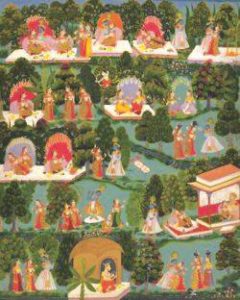 Khammaj is the representative raag of the Khammaj Thaat and the samay for singing it is the second prahar of the night: from 9PM to Midnight. Anyone listening to Khammaj or Khammaj based songs would know that the mood is light and enthralling but somewhere hidden in it is the pain (of separation). If one listens to O sajana barkha bahaar aayi, you get the same feelings: heart joyous at rain but full of ache for the lover.
Khammaj is the representative raag of the Khammaj Thaat and the samay for singing it is the second prahar of the night: from 9PM to Midnight. Anyone listening to Khammaj or Khammaj based songs would know that the mood is light and enthralling but somewhere hidden in it is the pain (of separation). If one listens to O sajana barkha bahaar aayi, you get the same feelings: heart joyous at rain but full of ache for the lover.
Now, why did Pandit Bhimsen Joshi say that the song starts with Khammaj but dissolves into Raag Kalavati in between? The reason is that both Khammaj and Kalavati belong to Khammaj Thaat. Kalavati is a pentatonic raag (Audhav-Audhav); whereas Khammaj had Rishab varjaya in Aaroha (ascent) only, Kalavati has both Rishab and Madhyam vrajaya in both Aaroha and Avroha. The main similarity is the Komal Nishad found in Avaroha in Khammaj. In Kalavati, it is Komal in both Aaroha and Avroha.
Some of the Hindi films songs composed in Khammaj are:
| 1. 2. 3. 4. 5. 6. 7. 8. 9. 10. 11. 12. 13. 14. 15. 16. 17. 18. 19. 20. 21. 22. 23. 24. 25. 26. 27. 28. 29. 30. 31. 32. 33. 34. 35. 36. 37. 38. 39. 40. 41. 42. 43. 44. |
O Sajna Jaao Re Jogi Khanak Gayo HaayLaage Unki Suratiya Kaanaha Raadha Hui Tere Mere Milan Ki Ye Raina Kuchh To Log Kahenge Nazar Laagi Raaja Aayo Kahan Se Ghanshyam Kaise Din Beete Kaanha Kaanha Jeevan Daata Saajh Savere Suman Samaan Kanha Main To Chhavi Dikhla Jaa Vaishnav Jan To Tora Man Badav Raat Naujawan Jhoomta Mere To Girdhar Gopaal Sudh Bisar Gai Chori Chori Chupke Chupke Chha Gaye Baadal Tumhi Mere Sab Kuchh Bahut Suna Hai Naath Chaand Akela Jaaye Kaahe Manwa Naache Dhal Chuki Shaam Gauri Gauri Chaand ke Dheere Dheere Machal Tore Naina Laagev Kaahe Kaanha Karat Hamari Kahi Maano Ab Ke Saawan Ghar Aaja Mai Zindagi Ka Saath Jogan Ban Aayi Hoon Ye Tanhaai Haye Re Deewana Mastan Hua Dil Nain Lad Jaiyen To Soch Ke Ye Gagan Mai Ri Mai To Madhuvan Me Naina Dhoondhe Tohe Shyam Hum Apna Unhen Bana |
Parakh Aamrapali Rishte NateMaa Baap Tumhare Liye Abhimaan Amar Prem Kaala Paani Buddha Mil Gaya Anuradha Shagird Sharafat Maadhvi Kotwal Sahab Shatranj Ke Khiladi Shatranj Ke Khiladi Narsi Bhagat Ganga Jamuna Geet Gaya Patthron Ne Meera Sangeet Samrat Tansen Aap Ki Kasam Chitralekha Chhote Babu Adhikaar Aalap Aalap Kohinoor Anita Anupama Mamta Baawarchi Dulhan Ek Raat Ki Jhanak Jhanak Payal Baaje Hum Dono Shabaab Tere Ghar Ke Saamne Bambai Ka Babu Ganga Jamuna Jyoti Chandralekha Dil Ki Raahen Bhanwara |
Lata Lata LataLata Asha Lata, Kishore Kumar Kishore Kumar Asha Manna Dey Lata Lata Lata Lata Hemlata Birju Maharaj Rewa Muhuri Manna Dey Asha Asha Vani Jayram, Dinkar Manna Dey Lata Rafi, Asha Manna Dey, Lata Lata Yesudas Lata Rafi Mukesh Lata Sandhya Mukherjee Laxmi Shankar Asha, Usha Lata Rafi Lata Lata Asha, Rafi Rafi Manna Dey, Lata Uma Devi Manna Dey |
The song I have taken for you today is from the 1970 Shakti Samanta movie Amar Prem starring Rajesh Khanna and Sharmila Tagore. It was penned by Anand Bakshi, composed by RD Burman and sung by Kishore Kumar.
I have already told you about Shakti Samanta, Rajesh Khanna and RD Burman. Let me tell you a bit about Anand Bakshi. We have already covered Kishore Kumar in Songs That Tug At Your Emotions #3 (Aa chal ke tujhe main le ke chalun),
Anand Bakshi was a master lyricist who matched his lyrics perfectly with the emotions of the protagonist. His most common paired with Laxmikant Pyarelal with whom he worked in 302 movies. Here, he is with RD Burman, with whom he did the second highest movies of his career: 99. Amongst the old breed of lyricsts, Anand Bakshi was the only one who penned more than 3000 songs whilst lyricists like Sahir and Sahkeel only penned less than 800.
Anand Bakshi died on 30 Mar 2002 in Mumbai. However, the songs of Anand Bakshi with RD Burman kept appearing until the 2011 movie Dum Maaro Dum. They had started with the 1965 movie Teesra Kaun. Some of my favourite songs of the pair are: Pyaar ka fasaana bana de dil deewana (Teesra Kaun, 1965), Sharabi sharabi mera naam ho gaya (Chandan Ka Palna, 1967), Jis gali mein tera ghar na ho baalma, Mera naam hai Shabnam, Na loi umang hai, Pyaar deewana hota hai, Ye shaam mastani and Ye jo mohabbaty hai (Kati Patang, 1970), Gulabi aankhen jo teri dekhi (The Train, 1970), Aaj unase pehli mulaqaat hogi (Paraya Dhan, 1971), Chanda O chanda kisne churayi teri meri nindiya (Lakhon Mein Ek, 1971), Dum maro dum, Dekho O deewano aisa kaam na karo, Kanchi re kanchi re, Phoolon ka taaro ka sabka kehna hai (Hare Krishna Hare Raam, 1971), Badha natkhat hai re, Chingari koi bhadake, Kuchh to log kahenge, Raina beeti jaaye, Ye kya hua kaise hua (Amar Prem, 1971), Hawa ke saath saath (Seeta Aur Geeta, 1972), Jaan-e-jaan dhoondata phir raha, Ye jawani hai deewani (Jawani Deewani, 1972), Duniya mein logo ko dhoka kabhi ho jaata hai, Rona kabhi nahin rona, Sun Champa sun Tara (Apna Desh, 1972), Neend chura ke raaton mein (Shareef Badmash, 1973), Main ek chor tu meri rani (Raja Rani, 1973), Jheel ke us paar (Jheel Ke Us Paar, 1973), Panna ki tamanna hai (Heera Panna, 1973), Diye jalate hain, Main shayar banaam, Nadiya se dariya dariya se sagar (Namak Haram, 1973), Bheegi bheegi raaton mein, Ek ajnabi haseena se, Hum dono do premi (Ajnabi, 1974), Chori chori chupke chupke, Karvate badalte rahe, Jay jay Shiv Shankar, Suno kaho kaha suna, Zindagi ke safar mein guzr jaate hain jo mukaam (Aap Ki Kasam, 1974), Do naino mein aansu bhare hain, O manjhi re (Khushboo, 1975), Jab taq hai jaan, Holi ke din, Mehbooba mehbooba, Ye dosti hum nahin chhodenge (Sholay, 1975), Ruk jaana O jaana (Warrant, 1975), Mere naina sawan bhaadon, Parbat ke peechhe (Mehbooba, 1976), Badhe achhe lagte hain (Balika Badhu, 1976), Aise na mujhe tum dekho seene se laga loonga (Darling Darling, 1977), Lallah lallah lori, Suhani chandini raaten hamen sone nahin deti (Mukti, 1977), Aati rahengi bahaaren, Kasme vaade nibhayenge hum (Kame Vaade, 1978), Ham bewafa hargiz na the, Lets do Cha cha cha (Shalimar, 1978), Do lafzon ki hai dil ki kahaani (The Great Gambler, 1979), Swan ke jhoole padhe (Jurmana, 1979), Maine poochha chand se (Abdullah, 1980), Pyaar karne wale pyaar karte hain shaan se, Yamma yamma ye khubsurat samaa (Shaan, 1980), Dekho maine dekha hai ek sapna, Yaad aa rahi hai teri yaad, Yeh ladki zara si deewani lagati hai (Love Story, 1981), Kya yahi pyaar hai (Rocky, 1981), E ri pawan dhoonde kise tera man (Bemissal, 1982), Jab ham jawan honge (Betaab, 1983), and Aur kya ahd-e-wafa hote hain (Sunny, 1984).
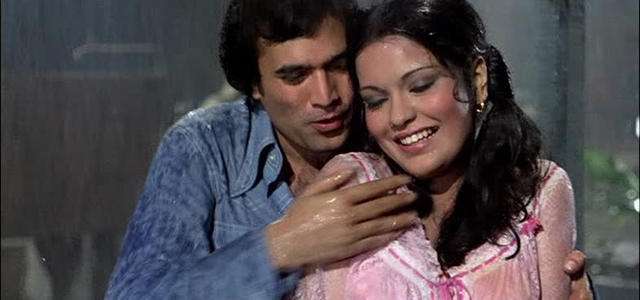
Before we actually take up the song, first, lets take up the value added learning of today. From the last seven times we started learning about some of the leading personalities in Indian Classical Music or Shastriya Sangeet. The first one that we took up was Ustaad Asad Ali Khan, the finest Rudra Veena player in the country. Then we took up Pandit Hari Parsad Chaurasia, the greatest Bansuri player in the country. Then we talked about Ali Akbar Khan, the greatest Sarod player in the country. Then we took up Pandit Ravi Shankar, the greatest Sitar player in the world. Then we took up the greatest classical singer in the country (of Carnatic tradition): MS Subbulakshmi. Then, we took up the greatest classical singer in the country (of Hindustani tradition): Pandit Bhimsen Joshi. Finally, we learnt about the Shehnai maestro Ustad Bismillah Khan. Tonight, we shall learn about Annapurna Devi, a great Surbahar (bass sitar) player of Hindustani Classical Music.
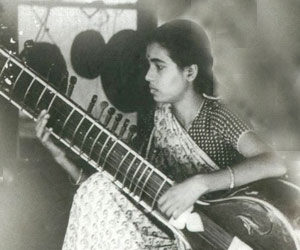
Annapurna Devi was born as Roshanara Khan on 16 Apr 1927 in Maihar (a princely state in British India, now in Madhya Pradesh) to Alauddin Khan who was a court musician of Maharaja Brijnath Singh. It was the Maharaja who named her Annapurna. Ali Akbar Khan, the greatest Sarod Player that we have already taken up, was her brother. She became an accomplished Surbahar player of the Maihar Gharana founded by her father (For learning more about Surbahar please see Raaga Based Song Of The Day #54). Her father, Alauddin Khan’s sitar student Pandit Ravi Shankar married her; he was 21 years old and she 14 years old at that time. She converted to Hinduism after marriage. Their marriage lasted for two decades. One of the reasons for the breakup of the marriage was because she used to get applauded more than him. After their divorce, she never performed in public again. She took to teaching music. Over the years she has had notable disciples: Hariprasad Chaurasia, Nityanand Haldipur, Nikhil Banerjee, Amit Bhattacharya, Pradeep Barot and Saswatti Saha (Sitar). In 1982 she married her student Rooshikumar Pandya. He died in 2013. In 1977 she was awarded Padma Bhushan, India’s third highest civilan award. In 1991 she was awarded the highest in performing arts: the Sangeet Natak Akademi Award.
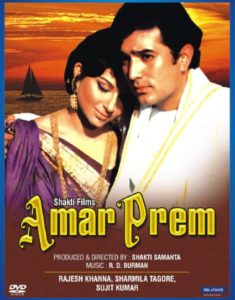 Lastly, a word about the movie from where this song has been taken by me. The 1972 movie Amar Prem was produced and directed by Shakti Samanta and starred Rajesh Khanna, Sharmila Tagore, Vinod Mehra and Madan Puri. Sharmila Tagore was Pushpa in the movie, forced into become a courtesan by Madan Puri. Rajesh Khanna was Anand Babu. Fed up of the indifferent ways of his own wife, he used to love coming to her and listen to her sing (eg, Raina beeti jaaye). The story when it unfolded made some of our social values stand on their head and the audience just loved the silent love that gradually evolved between the two. This song is the representative of the hollowness of social values (viz: Hamako jo aane dete hain hum khoye hain in rang raliyon mein; hamane unako bhi chhup chhup ke aate dekha in galiyon mein). Superb lyrics by Anand Bakshi.
Lastly, a word about the movie from where this song has been taken by me. The 1972 movie Amar Prem was produced and directed by Shakti Samanta and starred Rajesh Khanna, Sharmila Tagore, Vinod Mehra and Madan Puri. Sharmila Tagore was Pushpa in the movie, forced into become a courtesan by Madan Puri. Rajesh Khanna was Anand Babu. Fed up of the indifferent ways of his own wife, he used to love coming to her and listen to her sing (eg, Raina beeti jaaye). The story when it unfolded made some of our social values stand on their head and the audience just loved the silent love that gradually evolved between the two. This song is the representative of the hollowness of social values (viz: Hamako jo aane dete hain hum khoye hain in rang raliyon mein; hamane unako bhi chhup chhup ke aate dekha in galiyon mein). Superb lyrics by Anand Bakshi.
Please enjoy in Raag Khammaj, Taal Kaherava, Kishore Kumar sing a composition of RD Burman on the lyrics of Anand Bakshi in the 1972 Shakti Samanta movie: Kuchh to log kahenge, logon ka kaam hai kehna…..
(कुछ तो लोग कहेंगे, लोगों का काम है कहना
छोड़ो बेकार की बातों में कहीं बीत ना जाए रैना ) – २
कुछ तो लोग कहेंगे, लोगों का काम है कहना
कुछ रीत जगत की ऐसी है, हर एक सुबह की शाम हुई – २
तू कौन है, तेरा नाम है क्या, सीता भी यहाँ बदनाम हुई
फिर क्यूँ संसार की बातों से, भीग गये तेरे नयना
कुछ तो लोग कहेंगे, लोगों का काम है कहना
छोड़ो बेकार की बातों में कहीं बीत ना जाए रैना
कुछ तो लोग कहेंगे …
हमको जो ताने देते हैं, हम खोए हैं इन रंगरलियों में – २
हमने उनको भी छुप छुपके, आते देखा इन गलियों में
ये सच है झूठी बात नहीं, तुम बोलो ये सच है ना
कुछ तो लोग कहेंगे, लोगों का काम है कहना
छोड़ो बेकार की बातों में कहीं बीत ना जाए रैना
कुछ तो लोग कहेंगे …
We have intended to learn about Raaga based music whilst we entertain ourselves with Raaga based songs. So, lets, once again, take stock of our collective learning so far:
- On the first day we learnt about the Raaga system devised by Pandit Vishnu Narayan Bhatkhande, which is the prevalent system in Hindustani Classical Music and based on ten Thaats.
- On the second day we learnt about Tal or Taal.
- On the third day we learnt about characteristics of Raagas that included Swar, Jati, Thaat, Arohana and Avarohana, Vadi, Samvadi and Pakad.
- On the fourth day, we learnt about Sargam.
- On the fifth day, we learnt about notations used in Indian classical music or simply Swar Lipi.
- On the sixth day, we learnt about the Ras (sentiments) that Raagas evoke.
- On the seventh day, we learnt about various types of Swar: Shuddha, Achal, Vikrut, Komal and Teevra.
- On the eighth day, we learnt the parts of a composition in Indian Classical Music.
- On the ninth day, we learnt the names of some of the popular instruments used in Indian Classical Music.
- On the tenth day, we learnt about the sources of names of Raagas.
- On the eleventh day, we learnt about why Bhairavi is the first raag to be taught to beginners and also why it is the last in a performance.
- On the twelfth day, we learnt about Khammaj Thaat.
- On the thirteenth day, we learnt about Tal Punjabi Theka or Sitarkhani.
- On the fourteenth day, we learnt about Alap.
- On the fifteenth day, we learnt about List of Raagas (Raagmala) in my favourite book: Sri Guru Granth Sahib.
- On the sixteenth day, we learnt about tips for raaga identification.
- On the seventeenth day, we learnt the basics of Gharana system.
- On the eighteenth day, we learnt about Filmi Sangeet.
- On the nineteenth day, we learnt about the commonest Tal in Raagas: Tintal.
- On the twentieth day, we learnt about the Kafi Thaat.
- On the twenty-first day, we learnt a little more in detail about the classification of Raagas.
- On the twenty-second day, we learnt the essential differences between Bhairavi and Bhairav.
- On the twenty-third day, we learnt a little more in detail about the Jati or Jaati of a raaga.
- On the twenty-fourth day, we learnt details of Thaat Bilawal, the most basic thaat in the Bhatkhande’s system of raagas.
- On the twenty-fifth day, we learnt about Tintal.
- On the twenty-sixth day, we learnt in detail about the Raaga – Samay linkage.
- On the twenty-seventh day, we learnt about Lehar.
- On the twenty-eighth day, we learnt about the history of the Hindustani Music.
- On the twenty-ninth day, we learnt about Dhrupad.
- On the thirtieth day, we learnt about Rupaktal that I was introduced to, a few months back, by my friend Anand Desai.
- On the thirty-first day, we learnt about Khayal.
- On the thirty-second day, we learnt about Thumri.
- On the thirty-third day, we learnt about Tappa.
- On the thirty-fourth day, we learnt about Tarana.
- On the thirty-fifth day, we learnt about Tal Dipchandi (Moghali).
- On the thirty-sixth day, we learnt about Tabla.
- On the thirty-seventh day, we learnt about Kirtan.
- On the thirty-eighth day, we learnt about Pakhawaj.
- On the thirty-ninth day, we learnt about Hori.
- On the fortieth day, we learnt about Dadra.
- On the forty-first day, we learnt about Kajri.
- On the forty-second day, we learnt about Chaiti.
- On the forty-third day, we learnt about Sarangi.
- On the forty-fourth day, we learnt about Shehnai.
- On the forty-fifth day, we learnt about Sarod.
- On the forty-sixth day, we learnt about Bansuri.
- On the forty-seventh day, we learnt about Ektal and Tanpura.
- On the forty-eighth day, we learnt about Veena.
- On the forty-ninth day, we repeated our learning of Veena with a small excitement added.
- On the fiftieth day, we learnt about Dilruba/Esraj.
- On the fifty-first day, we learnt about Jaltarang.
- On the fifty-second day we learnt about Qawwali.
- On the fifty-third day, we learnt about Sitar.
- On the fifty-fourth day, we learnt about Surbahar.
- On the fifty-fifth day, we learnt about Harmonium.
- On the fifty-sixth day, we learnt about Santoor.
- On the fifty-seventh day, we learnt about Swarmandal.
- On the fifty-eighth day, we learnt about the Shruti Box.
- On the fifty-ninth day, we learnt about Alankar.
- On the sixtieth day, we learnt about singing in Aakaar.
- On the sixty-first day, we learnt about the Classification of Indian Musical Instruments.
- On the sixty-second day, we learnt a little about Carnatic Music.
- On the sixty-third day, we learnt about Natya Shastra.
- On the sixty-fourth day, we learnt about evolution of musical instruments in India down the ages.
- On the sixty-fifth day, we learnt about Riyaaz.
- On the sixty-sixth day, we looked at a list of Raagas in Hindustani Classical Music.
- On the sixty-seventh day, we learnt about the health benefits of raagas.
- On the sixty-eighth day, we learnt a little more comprehensively about the moods and emotions that raagas evoke.
- On the sixty-ninth day, we learnt about a mobile application to help identify raagas.
- On the seventieth day, we learnt about Melakarta Raagas.
- On the seventy-first day, we learnt about Sangita Makarand.
- On the seventy-second day, we learnt about TaalMala an Android application for personalized accompaniment of musical instruments during Riyaaz or even during Concert.
- On the seventy-third day, we learnt about Indian Classical Ragas, an Android application for mobile phones.
- On the seventy-fourth day, we learnt about Saregama Classical, another application for Classical Raagas.
- On the seventy-fifth day, we learnt about a free online service available to learn Indian Classical Music.
- On the seventy-sixth day, we learnt about List of Hindustani Classical Musical Festivals in India and Abroad.
- On the seventy-seventh day, we learnt about List of Carnatic Musical Festivals in India and Abroad.
- On the seventy-eighth day, we learnt about Jhaptal.
- On the seventy-ninth day, we learnt about Ektal.
- On the eightieth day, we learnt about Tivra Tal.
- On the eighty-first day, we learnt about the greatest Rudra Veena player ever: Ustaad Asad Ali Khan.
- On the eighty-second day, we learnt about the greatest Bansuri player alive: Pandit Hariprasad Chaurasia.
- On the eighty-third day, we learnt about the best Sarod player in the country: Ustaad Ali Akbar Khan.
- On the eighty-fourth day, we learnt about the greatest Sitar player in the world: Pandit Ravi Shankar.
- On the eighty-fifth day, we learnt about the greatest Indian vocalist of Carnatic tradition: MS Subbulakshmi.
- On the eighty-sixth day, we not just learnt about the greatest vocalist of Hindustani tradition: Pandit Bhimsen Joshi but also learnt about Tal Hinch.
- On the eighty-seventh day, we learnt about the Shehnai maestro Ustaad Bismillah Khan.
- And today, on the eighty-eighth day, we learnt about Annapurna Devi, the greatest Surbahar player in India.
There is much more still to be learnt and enjoyed.
Please stay tuned!
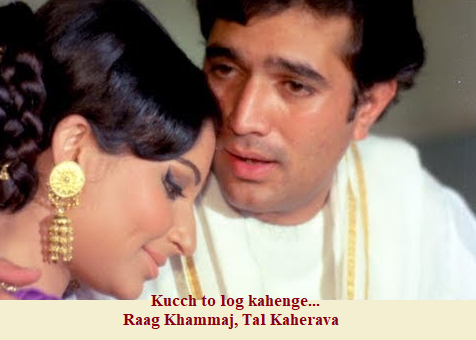
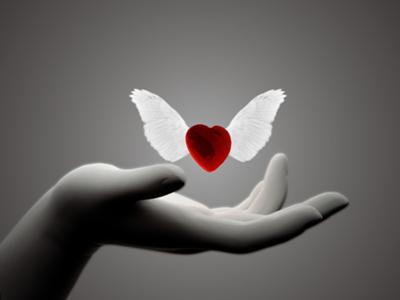
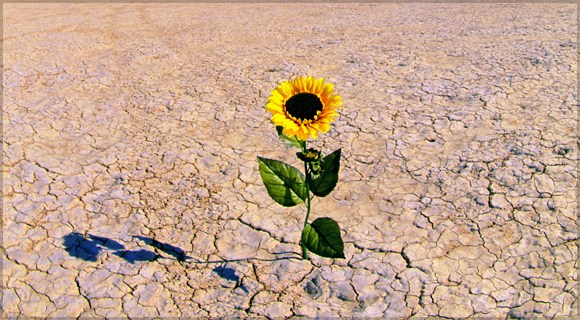
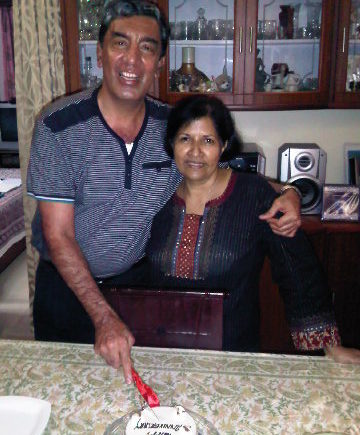
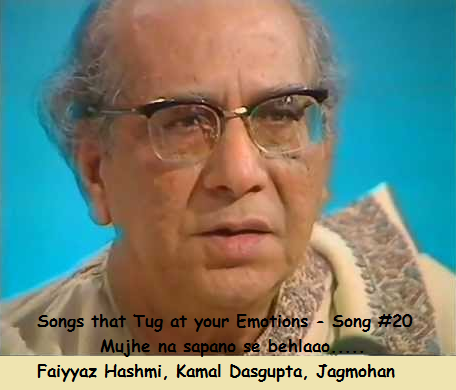
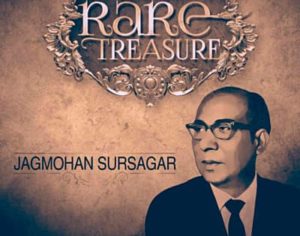
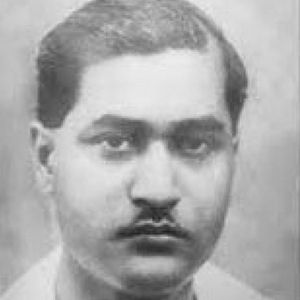
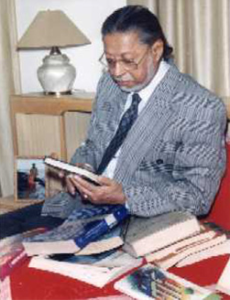 Fayyaz or Faiyyaz Hashmi
Fayyaz or Faiyyaz Hashmi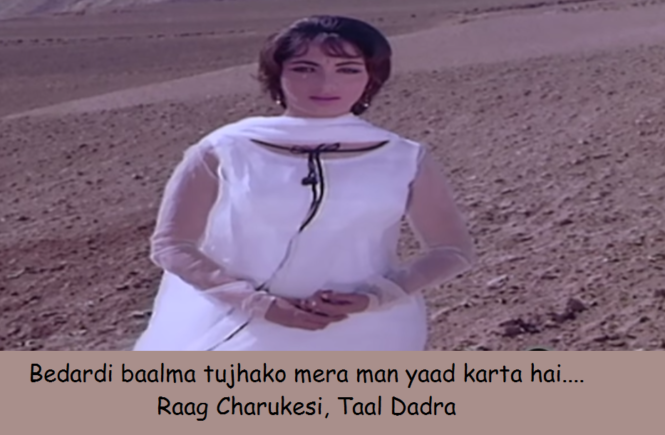
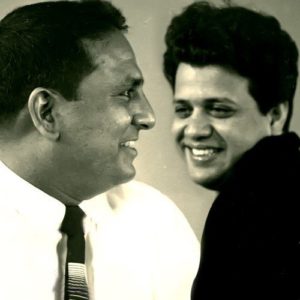 Shankar Jaikishan were the best and my most favourite music-duo on several scales
Shankar Jaikishan were the best and my most favourite music-duo on several scales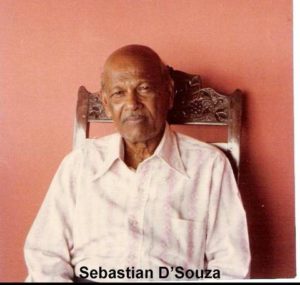
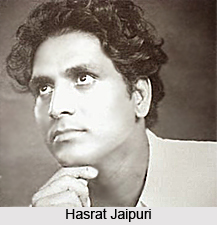 Let me, therefore, come to
Let me, therefore, come to 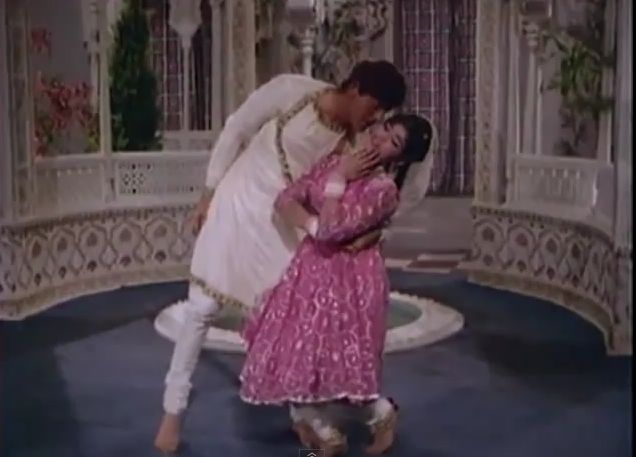
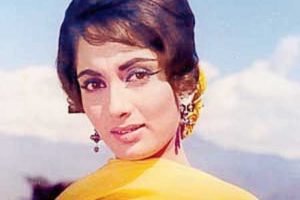 A word about the actress,
A word about the actress,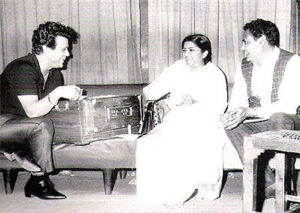
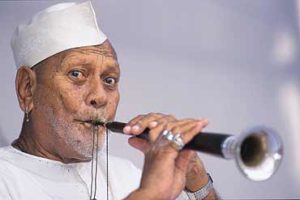 The name
The name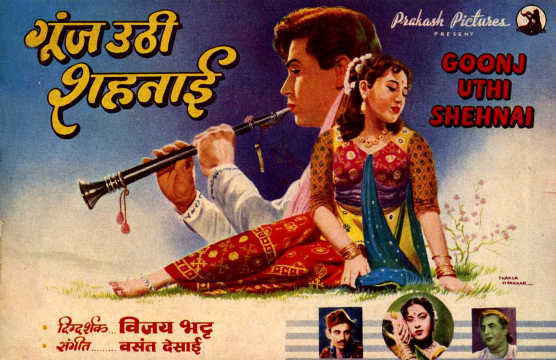
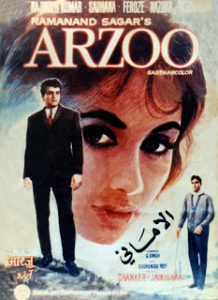 Lastly, a word about the movie from where this song (ghazal) has been taken by me.
Lastly, a word about the movie from where this song (ghazal) has been taken by me. 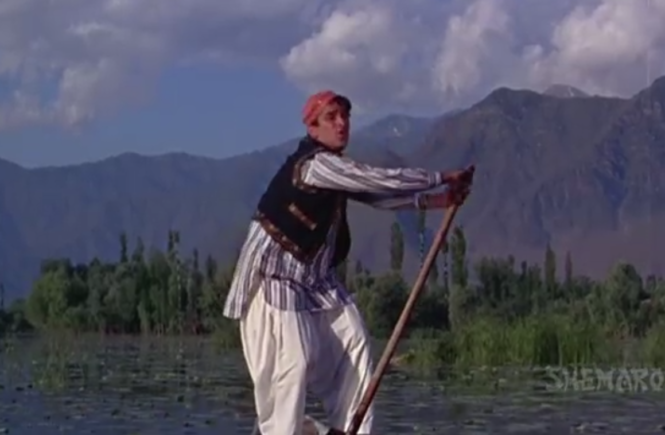
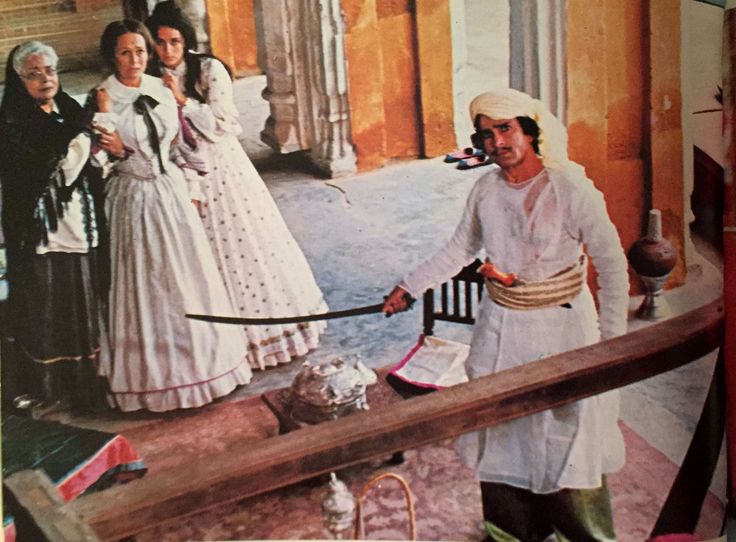
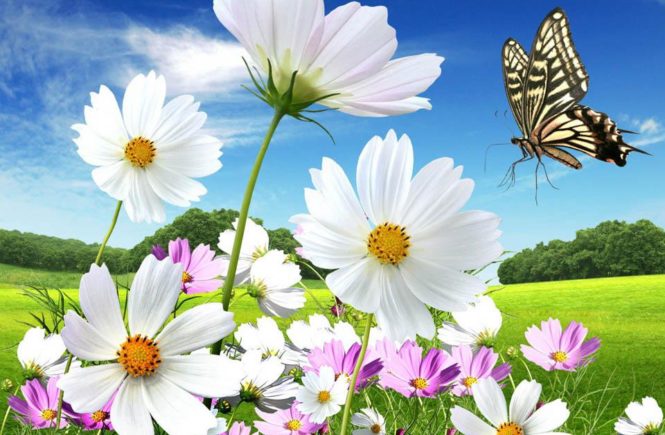

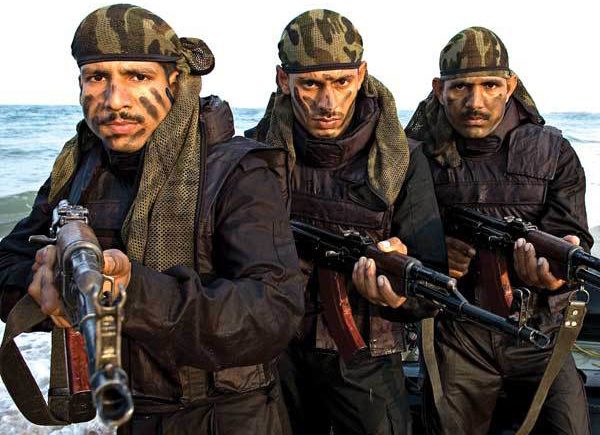
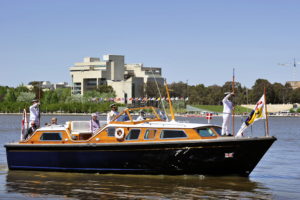

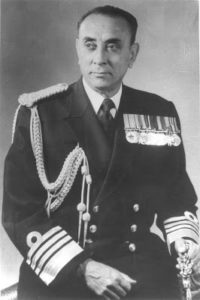 Two of my favourite guys who took terror with them wherever they went, both went on to become the Chiefs of Naval Staff:
Two of my favourite guys who took terror with them wherever they went, both went on to become the Chiefs of Naval Staff: 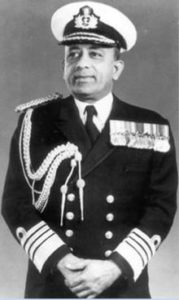 Ronnie would chase both officers and sailors if he found, whilst crossing them on the road, that they required proper haircut, were not in proper uniform or didn’t salute properly. Dawson had a commanding officer hauled up when he tried to contact him on residential phone (there were no cell phones during those days, thank God!) and the maid-servant couldn’t tell him where he was. He said residential telephones had been provided to important officers not for fun but so that they could be contacted in case of emergency. After this incident, the conversation between two newly appointed COs went like this:
Ronnie would chase both officers and sailors if he found, whilst crossing them on the road, that they required proper haircut, were not in proper uniform or didn’t salute properly. Dawson had a commanding officer hauled up when he tried to contact him on residential phone (there were no cell phones during those days, thank God!) and the maid-servant couldn’t tell him where he was. He said residential telephones had been provided to important officers not for fun but so that they could be contacted in case of emergency. After this incident, the conversation between two newly appointed COs went like this: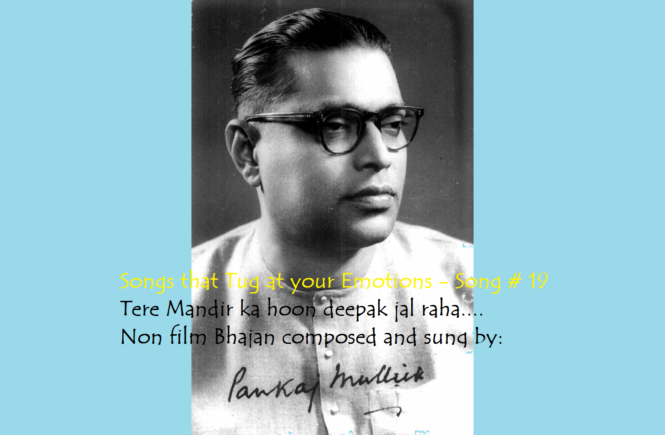
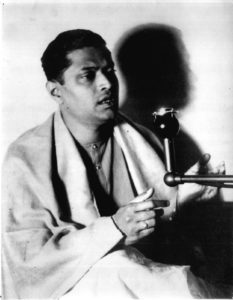 Pankaj Mullick
Pankaj Mullick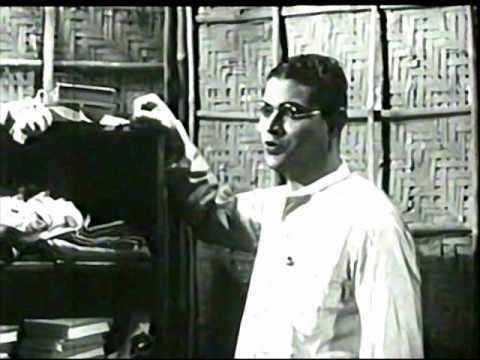
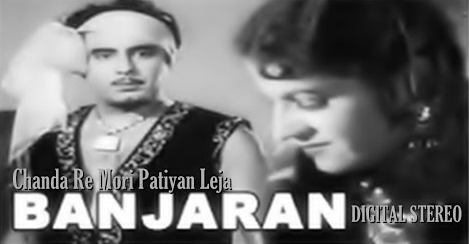
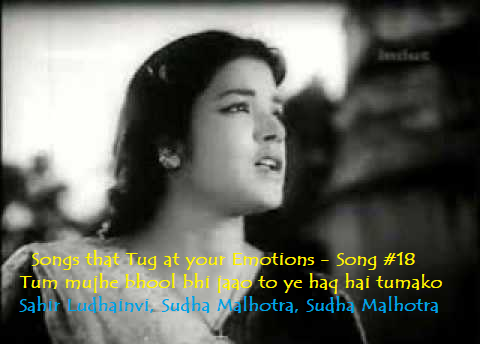
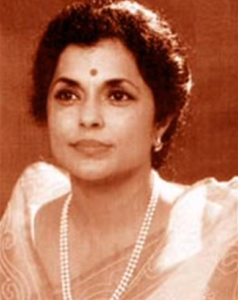
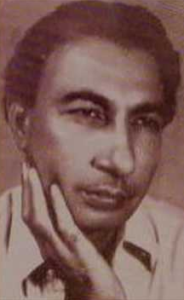 Lets turn to Sahir Ludhianvi, the lyricist of this song. Of course, many of his songs were indicative of the situation between him and
Lets turn to Sahir Ludhianvi, the lyricist of this song. Of course, many of his songs were indicative of the situation between him and 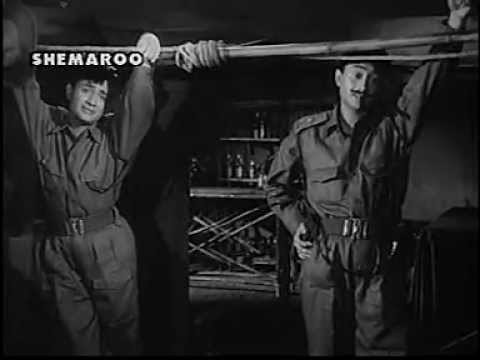
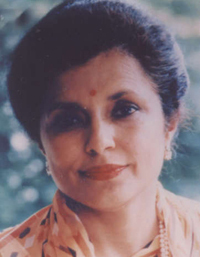 Lets turn to the
Lets turn to the 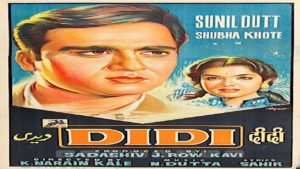 The movie from which the song of this post has been taken is the
The movie from which the song of this post has been taken is the 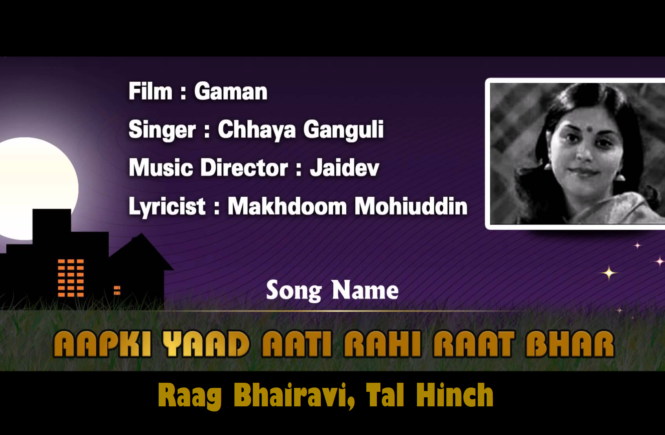
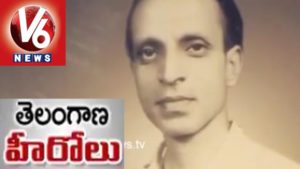 Let me, therefore, start with the poet of this great ghazal. His name was
Let me, therefore, start with the poet of this great ghazal. His name was 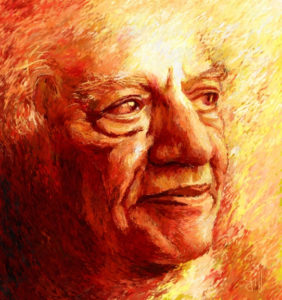 The ghazal, Aap ki yaad aati rahi raat bhar has a history of its own.
The ghazal, Aap ki yaad aati rahi raat bhar has a history of its own. 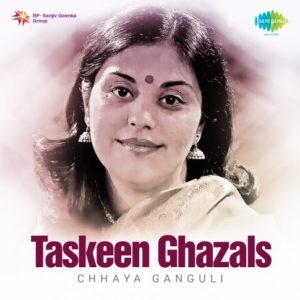
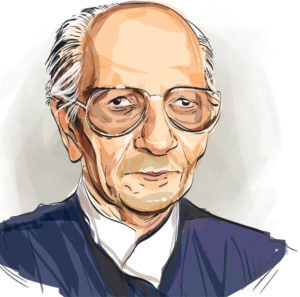 Jaidev Verma
Jaidev Verma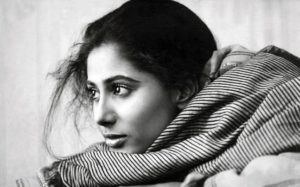
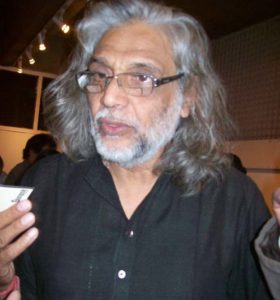
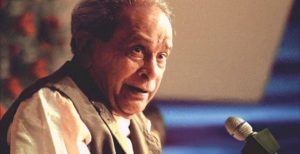
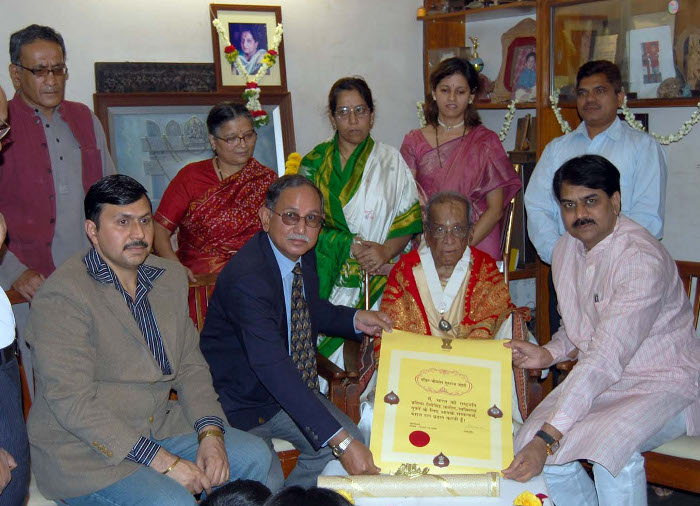
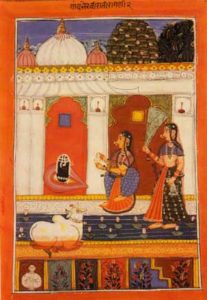
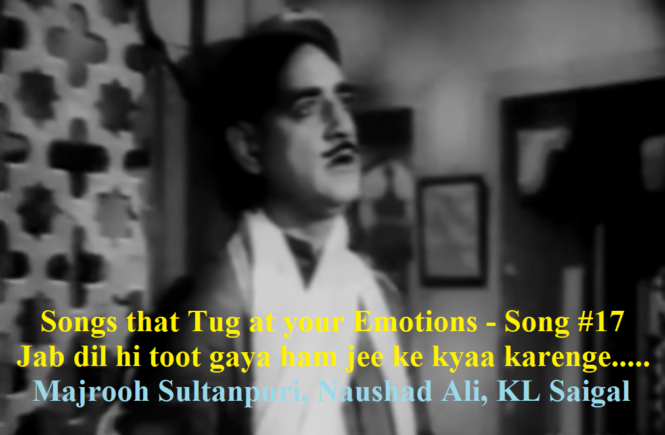
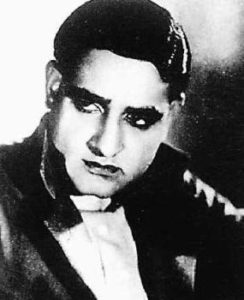 If you ask any person of my era, what is the commonest comment about
If you ask any person of my era, what is the commonest comment about 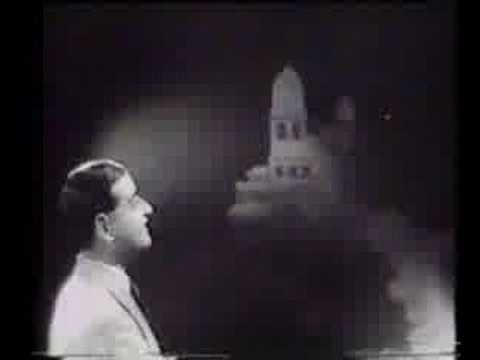
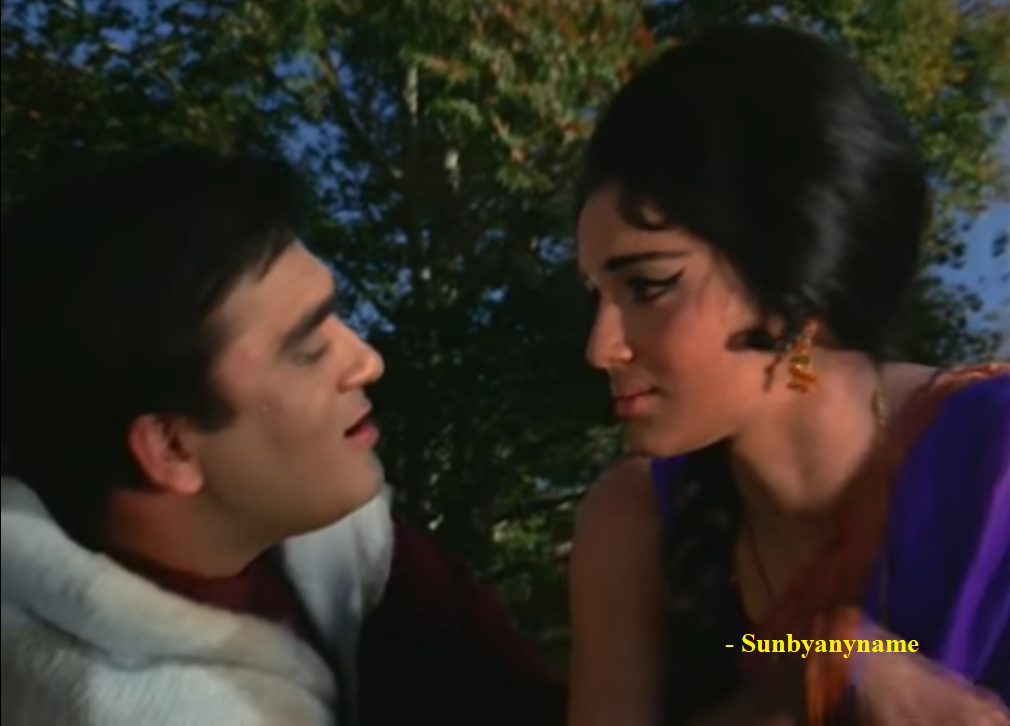
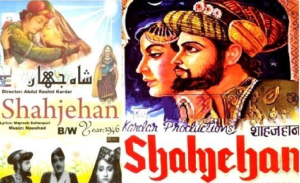 The movie’s story is a fictionalised account of an episode during the reign of Emperor Shajahan: “Circa the Mugal rule in Hindustan, Shahjahan, the present emperor is approached by one of his subjects, whose daughter, Ruhi, is so beautiful, that her suitors have killed her to-be grooms, as well as two of her brothers, who came to her aid. He now seeks the Emperor’s assistance. Appalled at this, the Emperor confers with his Queen, Mumtaz, and upon her advise asks the father to bring his daughter to be a guest of the palace, and it is from here that a suitor will be chosen by none other than his royal majesty himself. The father does as asked, but one of the Queen’s aide is troubled by Ruhi’s august presence, that she fears that the Emperor may take a liking to her, and make her his begum. She plots a devious scheme so that Ruhi is promised to get married to Shiraz. The matter gets quite complicated as Ruhi has already been promised to Sohail. The Emperor and his Queen are so perturbed by this situation, that both become ill. The situation is resolved when Sohail decides to give Ruhi up so that she can marry Shiraz – but not until Mumtaz tragically passes away. Devastated and heart-broken by her death, Shah Jahan feels that she can be made immortal by the building of a royal tomb, and asks Shiraz to come up with such a Mahal. Watch as events begin to unfold, that will finally give rise to one of the seven wonders of the world – The Taj Mahal.”
The movie’s story is a fictionalised account of an episode during the reign of Emperor Shajahan: “Circa the Mugal rule in Hindustan, Shahjahan, the present emperor is approached by one of his subjects, whose daughter, Ruhi, is so beautiful, that her suitors have killed her to-be grooms, as well as two of her brothers, who came to her aid. He now seeks the Emperor’s assistance. Appalled at this, the Emperor confers with his Queen, Mumtaz, and upon her advise asks the father to bring his daughter to be a guest of the palace, and it is from here that a suitor will be chosen by none other than his royal majesty himself. The father does as asked, but one of the Queen’s aide is troubled by Ruhi’s august presence, that she fears that the Emperor may take a liking to her, and make her his begum. She plots a devious scheme so that Ruhi is promised to get married to Shiraz. The matter gets quite complicated as Ruhi has already been promised to Sohail. The Emperor and his Queen are so perturbed by this situation, that both become ill. The situation is resolved when Sohail decides to give Ruhi up so that she can marry Shiraz – but not until Mumtaz tragically passes away. Devastated and heart-broken by her death, Shah Jahan feels that she can be made immortal by the building of a royal tomb, and asks Shiraz to come up with such a Mahal. Watch as events begin to unfold, that will finally give rise to one of the seven wonders of the world – The Taj Mahal.”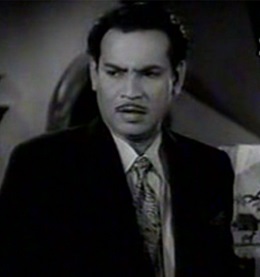
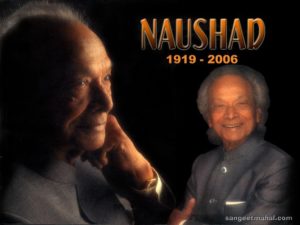 Naushad Ali,
Naushad Ali,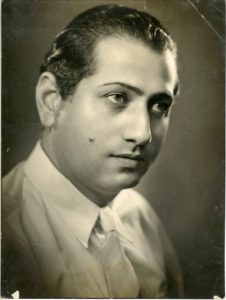
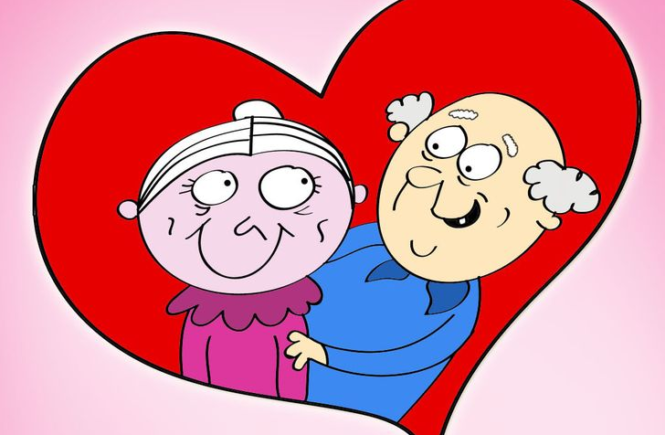
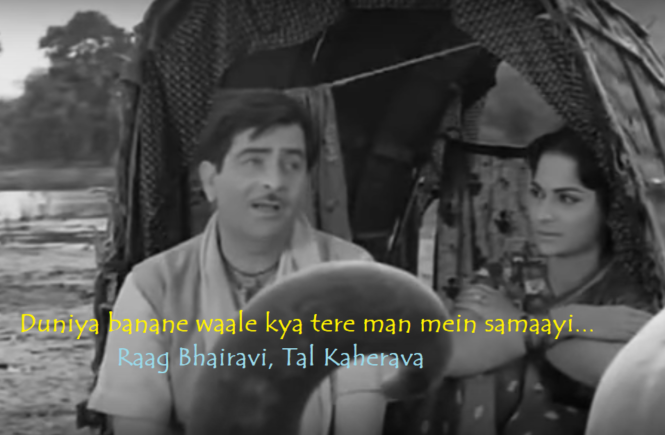
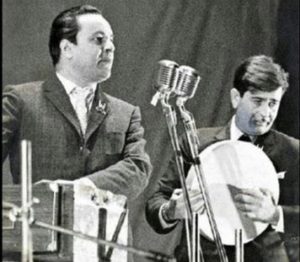
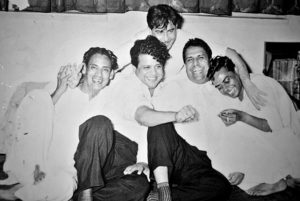
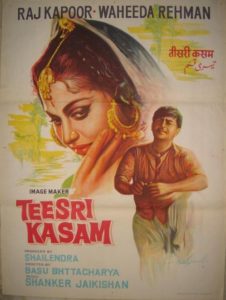 Indeed, this type of deep thinking is true of all songs of the
Indeed, this type of deep thinking is true of all songs of the 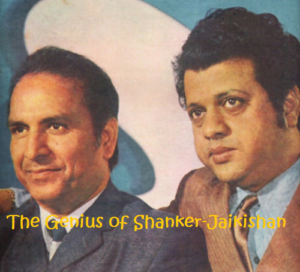
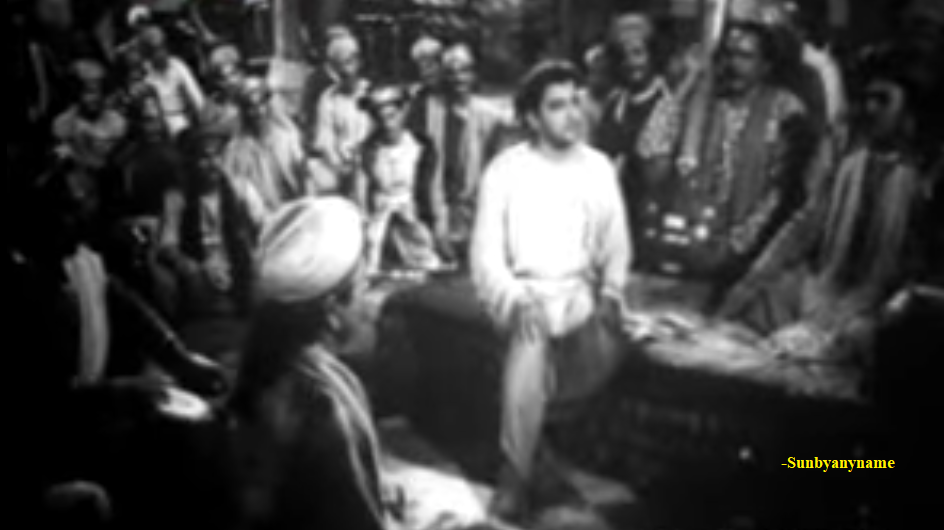
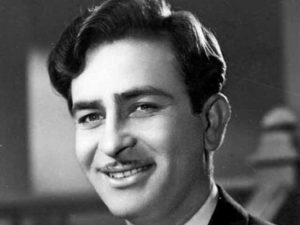
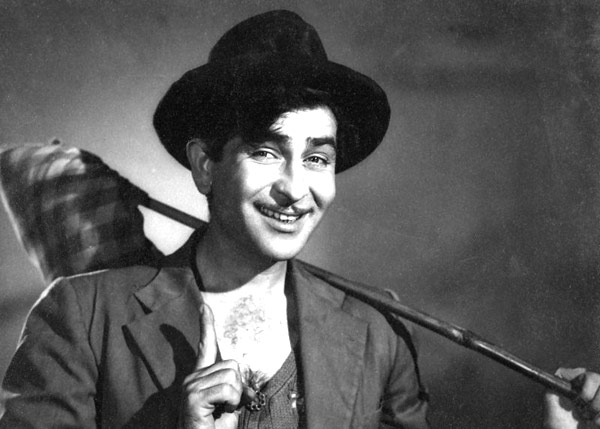
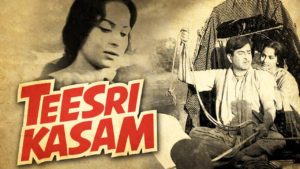 Lets get to the movie:
Lets get to the movie: 